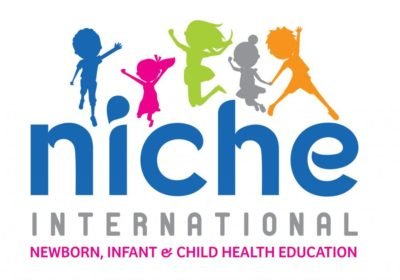


Kim and Julia have been busy in London (and Alison in Amersham) making these baby slings for mothers of preterm babies in Liberia. They will be used on the training courses in November and then left in country for use on the neonatal unit. Skin to skin mother care develops the bond between mother and baby as well as helping to prevent infection and keeping the baby warm. You can read more about the advantages of skin to skin care at https://www.nicheinternational.org.uk/2018/11/13/skin-to-skin-mother-and-father-care/.
We call them kalafongs on the Newborn Care Course but they are not actually called kalafong wraps – even in Kalafong hospital in South Africa which is where the pattern for these (very cheap and easy to make) skin to skin wraps is from, see https://www.up.ac.za/media/shared/Legacy/sitefiles/file/45/1335/877/thariinstructionsnewkmcwrappatternmay2011.pdf.





